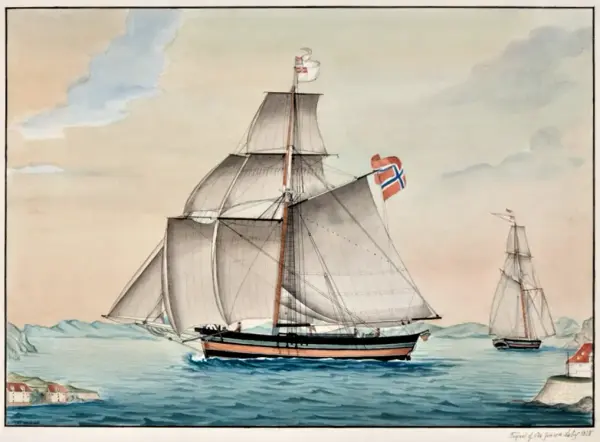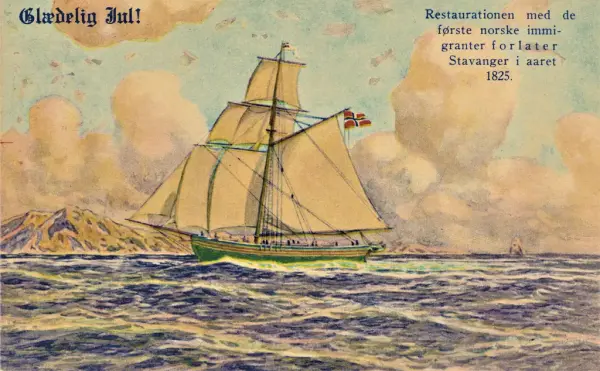- 1/1
Restauration
On July 4th, 1825, the sloop "Restauration" set sail from Stavanger with 52 emigrants on board. Their departure marks the beginning of organized emigration from Norway to America. The vessel carried a crew of seven and 45 passengers, 19 of whom were children. The crossing was arduous and lasted for three months. During the voyage, a baby was born, so the ship on arrival in New York on October 9th, 1825, counted 53 people on board.
- 1/1
This painting of the sloop Selen is the closest we get to a picture of the Restauration because that sloop was never actually depicted. Most later illustrations of Restauration have been modeled on this painting. Ole Johnsen Sebøy (1791-1843)
Captain of the "Restauration" and leader of the group was the Quaker Lars Larsen Geilane. The other emigrants sympathized with the Quakers and joined them in America. The primary motivation for their endeavor is assumed to be America’s freedom of religion.
The ship
The vessel was originally built in Hardanger in 1801 as the Hardanger yacht "Emmanuel" of 6 “lester” (approx. 12 tons). It sailed to Stavanger with herring and might have returned with grain from as far away as Gothenburg or Denmark.
In 1920, the vessel was rebuilt and enlarged in Egersund turning it into a sloop that was given the name "Restoration". A sloop is a smaller ship with a mainsail on the mast and a foresail on a stay ahead. The sloop had become 54 feet (16.46 m) long and 16 feet (4.88 m) wide, and was 18.5 commercial “lester” (about 38 tons).
The emigrants
The Sloopers, as these first emigrants were called, came from Tysvær, other villages in Rogaland and Stavanger. They were not poor, as they had managed to raise enough capital to buy both the vessel and necessary supplies for three months. They bought the "Restoration" for 1,800 “speciedaler” and had planned on selling both it and the cargo of 20 ship pounds (about 3,200 kg) of bar- and plate iron after arrival, to raise start-up capital in America. Unfortunately, it didn't work out that way.
Arriving in America
On arrival in New York, the sloop was seized and fined for having too many people on board in relation to the vessel's size.
The emigrants had been welcomed in New York by Norwegian pioneer Cleng Peerson and a group of American Quakers. Some of them helped to get the vessel released, but the emigrants had to sell the "Restauration" at a loss as they did not get more than $400 for it.
- 1/1
Christmas card depicting Restauration at sea.
You might also like to read the article
CROSSINGS 200
1825–2025
200 years of migration
E-mail: crossings200@annomuseum.no



